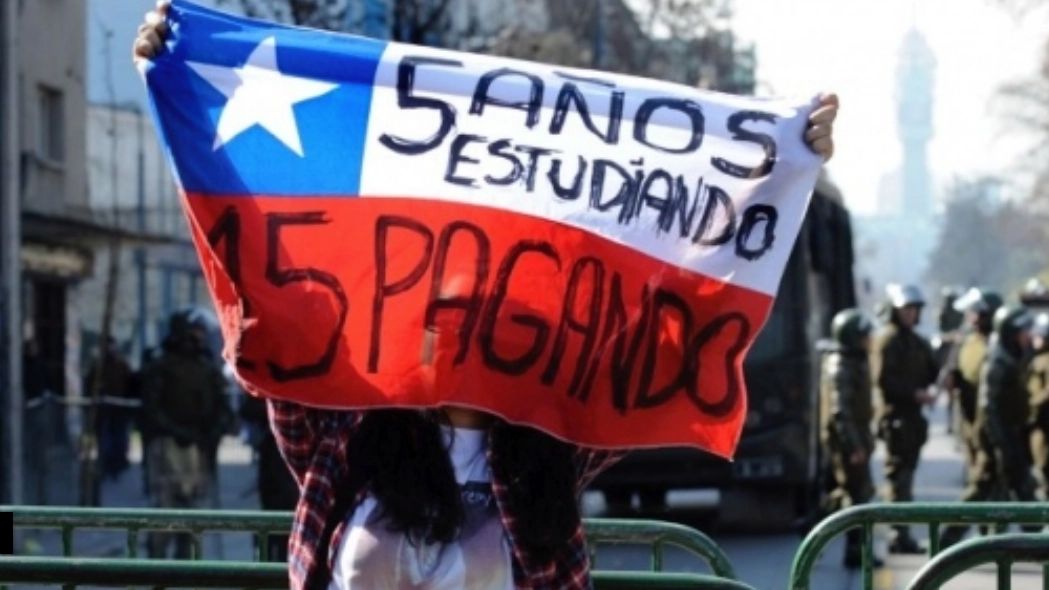In Chile, during the last few weeks, the discussion on “the CAE issue” has returned to the forefront in the context of the constitutional debate and the approval of the 2024 Budget. To contextualize, it is necessary to mention that the State-Guaranteed Student Loan Program (CAE in its Spanish acronym), as its name indicates, corresponds to a credit granted by the financial system to accredited higher education institutions to finance the fees of students recognized with economic difficulties and where the State acts as guarantor or guarantor until the beneficiary has fully paid his/her debt. Its creation in 2005 and subsequent regulation in 2012 are linked to the process of expansion of higher education in Chile, characterized by the growth of enrollment in the private sector, and the mobilizations of 2011, whose main demand called for the “end of profit” in education and where Gabriel Boric was one of the main student leaders. A decade later, in the middle of a presidential campaign, the “CAE cancellation” became one of the campaign promises of the Frente Amplio and its candidate Gabriel Boric, today Chile’s president. According to data from the Undersecretary of Higher Education (2022), there are about 670,000 CAE debtors.
Based on the aforementioned, the discussion on “the CAE issue” has been framed within the fulfillment of the government program, even though it has caused divisions within the coalition. For its part, the technical discussion has framed the debate around the need to create a new financing system, arguing that overcoming the CAE would imply a modernization toward a more adequate use of public resources to put an end to individual and bank debts. According to data from the Undersecretary of Higher Education (2022), 23% of CAE debtors did not finish their studies. Undoubtedly, addressing “the CAE issue” is a necessary measure for several reasons. On the one hand, it allows the oxygenation of the higher education system, since the credit policy proved inefficient as a source of financing, considering the growing demand for university and technical-professional training. On the other hand, it appeases (in a certain way) the pressure of student indebtedness as a possible catalyst for political mobilization, as a simile of the demands of 2006 and 2011. However, it is necessary to raise a fundamental discussion: Will the elimination of the CAE reduce inequality in higher education? Everything suggests that it will not.
Firstly, although the CAE was an insufficient measure to reduce inequality of access, it did fulfill the objective of weakening economic barriers to entry. The literature shows that, at least until 2017, the democratization and subsequent regulation of student loans made it possible to reduce the effect that household economic resources have on the probability of accessing higher education. However, this policy did not equally affect the probability of accessing different higher education institutions, as it did not have a significant effect on access to the most selective institutions: the universities that are members of the Rectors’ Council.
Secondly, reducing the CAE to a financing tool is a short-term measure in terms of educational policy. Research on inequality in higher education continues (in a certain way) to focus on the effects of the 1981 educational reform (the one that expanded it, but privatized it), without rethinking it as a whole. An example of this is the lack of dialogue on the effect of measures such as changes in the admissions system, the financing policy, and the problems of retention and timely graduation. For example, the literature shows that free admission has increased the number of applications to the most prestigious institutions, but the economic and socio-cultural barriers to access continue to influence, segmenting the probabilities of access. In this sense, the “real opportunities” of young people from less advantaged sectors are still limited to the socio-cultural resources of the household, although the free education policy has broadened the spectrum of “possible opportunities”.
Thirdly, although the discussion on the financing of higher education is important, so are the policies of access, retention, and timely graduation. In this sense, the evidence indicates that educational policies are needed to address the socio-cultural and socioemotional gaps between young people from different social backgrounds which, although acquired at previous educational levels, are reinforced by the current structure of the higher education system. In this regard, it should be noted that most of the student welfare initiatives depend on the higher education institutions themselves.
Concerning all the aforementioned issues, the XII Latin American Congress on Abandonment in Higher Education (held at the Catholic University of Temuco, from November 22 to November 24) was illustrative in showing all those problems that will persist despite the elimination of the CAE. If the objective is to reduce inequality in higher education, it is just as essential to discuss financing and access as it is to think about the trajectory within this educational level. In this sense, there is a pending debate about the public policies required by a higher education system that has never been so massive and diverse. To this end, the recommendations point to the restructuring of curricula, the updating of pedagogical strategies and administrative records, and the collaboration of local governments and civil society organizations.
All these issues should lead to the CAE elimination.
*Translated by Janaína Ruviaro da Silva from the original in Spanish











